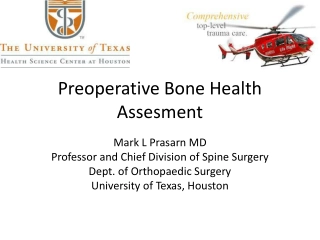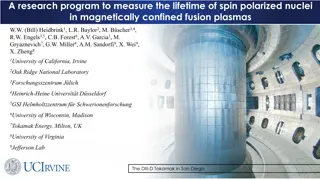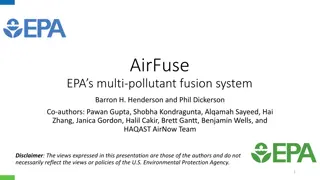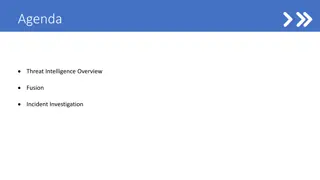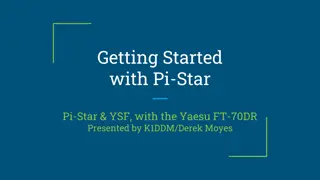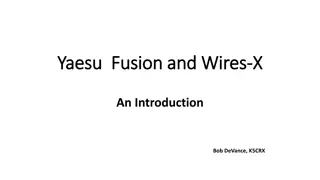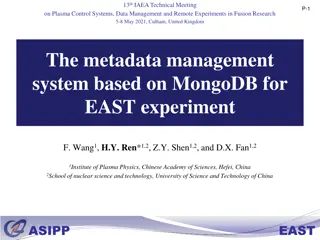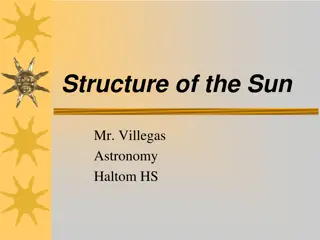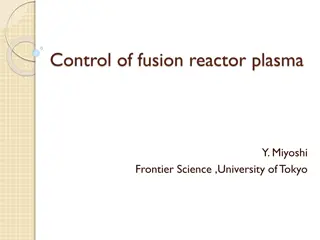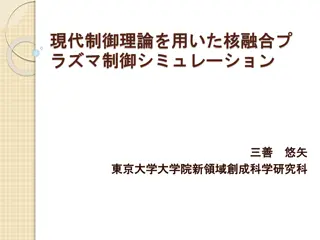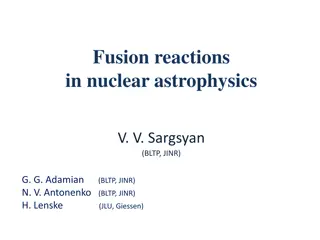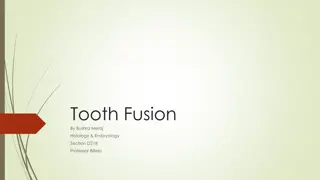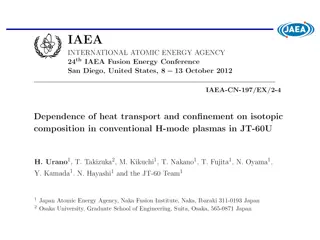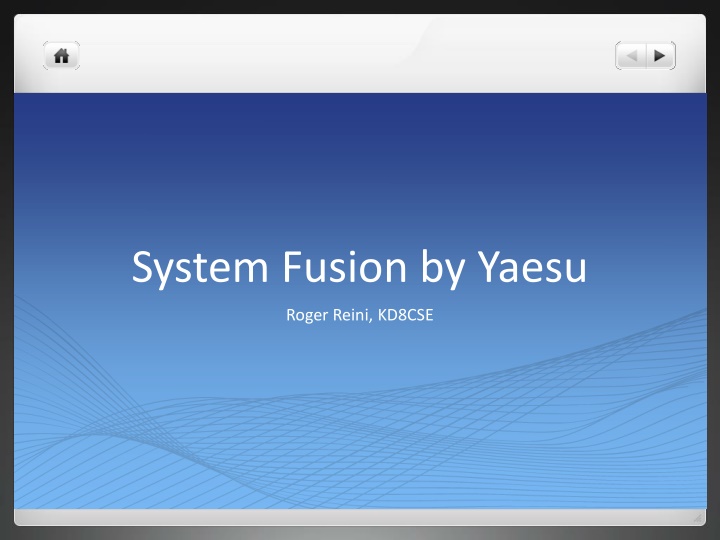
Digital Communication Systems: Evolution and Modulation Techniques
Explore the history and advancements of digital communication systems, including GMSK, C4FM modulation, FDMA, and TDMA protocols. Learn about the development of amateur radio technologies and the differences between GMSK and C4FM modulation techniques.
Download Presentation

Please find below an Image/Link to download the presentation.
The content on the website is provided AS IS for your information and personal use only. It may not be sold, licensed, or shared on other websites without obtaining consent from the author. If you encounter any issues during the download, it is possible that the publisher has removed the file from their server.
You are allowed to download the files provided on this website for personal or commercial use, subject to the condition that they are used lawfully. All files are the property of their respective owners.
The content on the website is provided AS IS for your information and personal use only. It may not be sold, licensed, or shared on other websites without obtaining consent from the author.
E N D
Presentation Transcript
HomeButton.png System Fusion by Yaesu Roger Reini, KD8CSE
HomeButton.png Overview Digital communications in amateur radio and the case for C4FM Yaesu s implementation of C4FM: System Fusion
HomeButton.png History of Digital Modes in Land Mobile 1980 s: first digital LMR radios appear, using GMSK (GFSK) technique Now, GMSK is out of favor, and C4FM (4-level Frequency Shift Keying) is dominant 2003: first GMSK transceiver released for amateur radio market 2004: Icom s D-STAR released; it also uses GMSK 2011: Motorola LMR s Digital Mobile Radio released, using C4FM; DMR- MARC demonstrated it for Amateur Radio at Dayton
HomeButton.png Types of Digital Communication Systems Modulation: GMSK, /4 DPQSK, C4DM (4-level FSK) Communication type: FDMA (Frequency Domain Multiple Access), TDMA (Time Domain Multiple Access) Protocol
HomeButton.png GMSK Simple, used in earlier cell phone systems Performance exceeded by other systems D-STAR uses GMSK
HomeButton.png /4 DPQSK (4-minute pi DPQSK) High-grade modulation method, produces low distortion Requires linearity (like SSB transceivers) and complicated circuitry to implement Not commonly used in LMR
HomeButton.png C4FM Modulation At same bandwidth, C4FM circuit can be simplified and the Bit Error Rate approved Main modulation method in LMR these days Yaesu using this as the basis for SystemFusion in the amateur market
HomeButton.png FDMA vs TDMA FDMA circuitry is simpler than TDMA TDMA reduces transmission time by one-half or more, reducing power consumption
HomeButton.png Is C4FM compatible with D-STAR? No, it s not; different modulation techniques (GMSK vs C4FM) Is this a problem in the amateur radio world? Not really; an example of the experimentation that amateur radio is known for
HomeButton.png Is C4FM Digital always the superior mode? No, it isn t; there will be instances when analog is superior We amateurs know that different modes have different advantages and that some are preferred in certain circumstances C4FM is another mode available to amateurs, increasing our capabilities; it s another tool in our toolbox
HomeButton.png Yaesu s implementation: System Fusion Three C4FM modes, using 12.5 kHz bandwidth: V/D Mode Voice/Data simultaneous communication, half for voice, half for data and error correction Voice FR (full rate) Mode all bandwidth used for voice, top audio quality Data FR Mode all bandwidth used for data Analog FM 25 kHz; used when signals too weak for digital
HomeButton.png AMS (Automatic Mode Select) Transceiver recognizes the incoming mode (C4FM digital or analog FM) and switches over to match that mode No need to remember to manually switch the mode on the transceiver Enables mixed-mode communication on compatible repeaters If a SystemFusion repeater is installed, you re not locked out if you don t have a SystemFusion transceiver
HomeButton.png New Functions Gained with C4FM Digital GM (Group Monitor) Function see where group members are located Snapshot Function transmit images taken with camera microphone Smart Navigation Functions Simultaneous Voice and Data transmissions allows APRS-type position data to be sent while transmitting Backtrack navigation allows one to return to a preset point (useful for hiking)
HomeButton.png Equipment that is C4FM capable Repeater DR-1 144/430 dual band C4FM/FM repeater HT FT1DR 144/430 dual band C4FM/FM 5W transceiver Mobile FTM-400DR 144/430 dual band C4FM/FM 50W transceiver
HomeButton.png For More Information Yaesu www.yaesu.com; link to System Fusion page FT1DR 2m/70cm HT FTM-400DR 2m/70cm mobile DR-1X digital 2m/70cm repeater

